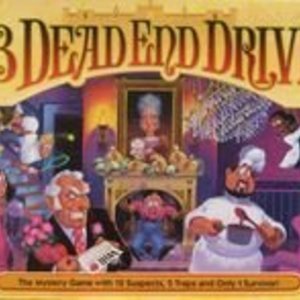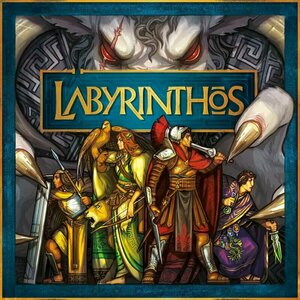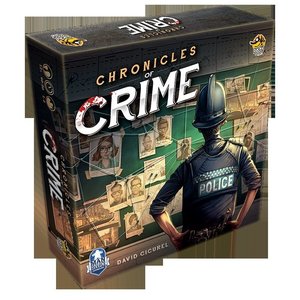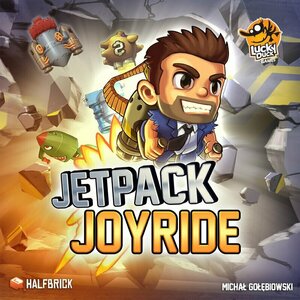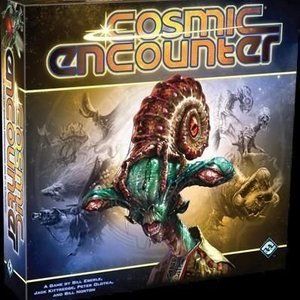
Cosmic Encounter
Tabletop Game
Build a galactic empire... In the depths of space, the alien races of the Cosmos vie with each other...
Boardgames GroupGames SpaceBattlegames
Matthew Krueger (10051 KP) rated 13 Dead End Drive in Tabletop Games
Jul 17, 2020 (Updated Jul 18, 2020)
13 Dead End Drive is a murder-themed board game originally from Milton Bradley. Released in 1993, it was followed in 2002 by a sequel, 1313 Dead End Drive. Currently, Winning Moves Games USA Winning Moves publishes the game in the USA.
The story behind the game involves the death of a wealthy old woman triggering a feud over her will. The players utilize traps located on the game board, which represents a mansion, to kill characters controlled by other players in order to claim the estate for themselves.
The Gameplay:
At the start of gameplay, players are dealt "Character cards" which correspond to matching pawns on the board. Since there are 12 characters, it is often the case that players control more than one character. However, which player controls which character is not revealed. Along with the character cards, there are also Portrait Cards, which determine who the current favorite for the inheritance is, and Trap Cards, which are used to spring traps and knock off other players.
During each turn, a player rolls two dice and moves two pawns, one pawn for each die. It is legal for players to move a pawn that is not theirs in order to bring it closer to or onto a Trap Space. All pawns must be moved off the red chair spaces before any pawns can be moved a second time or onto a trap space. If a pawn is moved onto a trap space by exact roll only, the player must have the corresponding trap card in his or her possession in order to spring the trap. Springing traps is not mandatory, however. After that, play proceeds on to the next player. A pawn can not pass through or land on the same space as another pawn during the same turn.
During the game, a Portrait Card is displayed in the picture frame above the fireplace. That character is now the current favorite to inherit the fortune. At that moment, for all intents and purposes, that character is now marked for death and must try to escape the mansion before he or she is either knocked off or the portrait changes (see "Special Spaces and Rules" below).
Also, during the game, a Detective is waiting outside, slowly advancing toward the front door. His arrival signifies the reading of the will and the announcement of the winner. The Detective can only move one space at a time, and only when a Detective Card (hidden inside the Trap Card pile) is drawn. There are 13 steps to the front door. If the Detective makes it to the front door before all other characters have been eliminated, the game is over.
Ways to win:
There are three ways to win 13 Dead End Drive:
Be the last character alive.
Escape the Mansion while your character's picture is displayed in the Picture Frame.
Have your character's picture displayed in the Picture Frame when the Detective reaches the front door.
Traps:
13 Dead End Drive has five different booby traps that are used to dispose of other characters. In the story of the game, the traps are designed to make deaths appear accidental. The traps are the Chandelier, the Bookcase, the Stairs, a Statue in a suit of armor, and the Fireplace: if a pawn has the misfortune to land on the trap space in front of or under one of these traps, the Trap card is played and the trap is sprung in the following ways:
To activate the Chandelier, flip a switch in the music room that drops the chandelier onto the pawn, eliminating it from play.
To activate the Bookcase, move that pawn up onto the top of the ladder and rest that pawn on top of the bookcase in the library, and flip a switch that will send the pawn flying back onto the board and eliminating it from play.
In order to activate the Stairs, a player can move it up onto the top of the stairs in the hall and flip a switch that will violently toss the pawn back down the stairs and onto the board, resulting in its elimination.
To activate the Statue, in the gallery, a player can flip a switch that will send a statue in a full suit of armor crashing down onto the pawn.
The Fireplace is activated in the dining room when a player flips a switch that will send the pawn flying backwards and into the figurative fire, though the box describes it as a Trap Door.
When a player moves a pawn onto a Trap Space, they must draw a card from the Trap Card pile (if they do not already have the matching trap card in their possession). If the player draws the matching Trap Card, they can either play it immediately or hold the card for future use. If the player does not have the matching Trap Card, the trap cannot be sprung, but the card can be saved for future use. There are also "Wild" Trap Cards which permit all traps to be used anytime a pawn is in that space. If, however, the player draws a Detective card, the Detective is moved one space forward, but the player is permitted to draw another Trap Card before ending the turn.
Once a trap is sprung, that pawn and the matching Character Card are laid down on the "Discard" pile on the board (the couch). If during the course of play, a Portrait Card comes up for a character that has been knocked off, that card is immediately taken down and placed on the "Discard" pile, revealing a new Portrait. The Portrait cards are shuffled at the beginning of gameplay and concealed by an "Aunt Agatha" portrait card to hide the known deck order.
Special spaces and rules:
Rolling Doubles: If a player rolls doubles that player chooses whether or not to move the current Portrait card to the back of the pack to reveal new Portrait. The player then has the choice of:
Moving one pawn the total number of spaces shown on the dice, or
Moving two pawns, one pawn for each die.
Secret Passages: On the board are special spaces that represent "Secret Passages."
Any character can enter any secret passage at any time, regardless of whether or not it is by exact roll. Moving from one secret passage to another counts as one space move for a character. Secret passages are often used to bring opponent's pawns closer to traps or to bring a player's own pawn closer to the door.
Bluffing: Bluffing is permitted in "13 Dead End Drive." In terms of strategy, a player may move their own pieces towards or even onto trap spaces in an attempt to fool opponents. Even if that player has the matching trap card for the space their own character is on, they do not have to play it. Instead, they can pretend that they do not have the correct card and draw another one. If they happen to draw the right trap card, they can pretend that the card is the wrong one, and play continues as normal.
Its a excellent game, if you like clue than you will love this game. Its a excellent bluff deduction murder mystery game.
Purple Phoenix Games (2266 KP) rated Labyrinthos in Tabletop Games
Feb 10, 2021
Disclaimer: I do not intend to rehash the entire rulebook in this review, but rather provide an overview of the rules and game flow. -L
Labyrinthos is a game of action and adventure in which players are exploring the famed Labyrinth of Daedalus, searching for the 4 secret keys that will let them escape! All this while avoiding traps, their competitors, and the deadly Minotaur who seemingly lurks around every corner. To setup for a game, create the Labyrinth as described in the rules – in the end it will be a 7×7 tile grid. Each player receives a Player Board, Standee, 4 Desperation cards, 7 Action tokens (3 Hand tokens and 4 Feet tokens for the first turn). The remaining Desperation cards and tokens are placed to the side of the play area, along with the Key tokens. Select a starting player, and the game is ready to begin!
Over a series of rounds, players will take turns performing various actions, exploring the Labyrinth, searching for Keys, and avoiding the Minotaur. On your turn, you will be spending Action tokens to perform various actions, like: Move (to an adjacent tile), Explore (flip over an adjacent face-down tile and move to it), Discover Key (gain the corresponding Key token to your Player board), Desperate Action (play a Desperation card), and a handful of other actions. Each action has a token cost associated with it, and you must pay it in order to perform the action. Each different Player Board also has a unique Special Ability that is active during the game. Once you have taken as many actions as you can/want to take, you will return any unused Action tokens to the supply, and then choose a combination of 7 new Action tokens to be used on your next turn. Then, you will refresh your hand – drawing or discarding Desperation cards so your hand limit is 4 minus the number of Key tokens you possess.
The final step of your turn is to roll the Minotaur die and resolve his movement/actions. The movement of the Minotaur is similar to the movement rules of players, and some results on the Minotaur die activate special abilities. If the Minotaur ever enters a tile occupied by a player, he immediately Attacks! The controlling player rolls the Blood die, and the attacked hero gains that number of Wounds to their Player Board. A Wound on your Player Board will cover one of your turn actions, prohibiting you from performing that action until you spend Action tokens to Heal. Certain tiles of the Maze have special symbols that will immediately affect the gameplay. For example, any time a player moves onto a Trap tile, they immediately take a Wound. When a player is on a Hide tile, they cannot be Attacked by the Minotaur. Play continues in this fashion, alternating turns, until a player has collected all 4 Key tokens and made their way back to the starting Door tile. That player has successfully escaped, and all others remain trapped in the Labyrinth!
I know that may seem like a lot, but the gameplay itself is actually pretty streamlined and intuitive. The action descriptions on the Player Boards are clear and concise, acting as a player reference sheet in a way. I appreciate the Player Boards SO much because it keeps me from having to continually refer to the rulebook for any action questions. The action options themselves are simple to understand and perform, but the strategy required for overall success is trickier to master. This truly is an exploration game – the 7×7 grid is created anew every game, and chances are you will never play with the same grid layout twice. The Key tiles could be anywhere, and you have to try to get to them before your opponents. The different tile symbols offer some risk/reward decisions. Do you risk turning over an undiscovered tile in hopes that it gets you across this gap? It could be a Trap! Or it could be a Secret Passage that allows you to move elsewhere. You’ll never know if you don’t try it!
I also really like the mechanic of the Minotaur in this game. At the end of your turn, you roll the Minotaur die and resolve it. That means the Minotaur is essentially controlled by all players. It becomes a sort of tug-of-war, if you will, as players try to get the Minotaur to attack opponents, while hopefully also staying out of his range for the next player’s turn. Another neat thing about Labyrinthos is that when you collect a Key token, it actually provides you with an action and is added to your Player Board, covering an existing action. Through the use of actions and Desperation cards, you could be able to move Keys around on your Player Board too. Maybe its initial placement doesn’t fit the situation anymore, and you need that covered power back! The opportunities to strategize with your actions are endless, and that keeps the gameplay engaging. One last cool thing I want to mention is the selection of new Action tokens at the end of each turn. Certain actions require Hand, Feet, or both types of tokens, and having the ability to choose the combination of those for yourself feels pretty powerful. It could also quickly backfire, if suddenly you find yourself needing Feet tokens, but you only have Hands left! It’s another layer to the strategy, and it helps up the excitement of play.
Components. The components of this game are great. The maze tiles are nice and sturdy, the symbolism clean and clear. The Desperation cards have some cool flavor text, and their actions are straightforward. All of the Standees, tokens, and dice are good quality that will hold up to lots of handling. All in all, great production quality!
I am extremely happy that I decided to back Labyrinthos on Kickstarter. For being a seemingly simple game of maze exploration and movement, there is definitely a lot more to it than meets the eye. Players have to manage resources and plan ahead for what they need in subsequent turns. Desperation cards can affect the gameplay, and can sometimes even be used during an opponent’s turn. The ability of Key tokens to cover existing abilities really makes players think about what their strategy is moving forward. All of these aspects put into one game make for a fun and immersive experience. Purple Phoenix Games gives it an a-maze-ing 10 / 12. Also, special shout-out to the all-female team behind this great game!! It is really cool to see how women are moving up in the gaming industry, and becoming prominent players across game design, art, production, and media content realms within this hobby. Kudos to you ladies! I am very much looking forward to supporting your games in the future!
Purple Phoenix Games (2266 KP) rated Chronicles of Crime in Tabletop Games
Jul 1, 2021
Chronicles of Crime is an app-driven storytelling, deduction, adventure board game that can be played solo or cooperatively. Players will be assuming the mantles of London detectives attempting to solve difficult cases at Scotland Yard. As it is a cooperative game players will win or lose together, but the game itself will be helping players along the way.
To setup, place the Evidence Board on the table and surround it with these components: Location Boards in a stack, but Scotland Yard attached to the bottom of the Evidence Board, Character and Special Items cards in face-down stacks, Evidence Category cards face-up, and the four Forensic Contact cards nearby as well. Open the app, choose the scenario to play, and let the app guide you through the introduction to the game.
As there are no real “turns” Chronicles of Crime allows freedom for players to essentially roam around London’s sectors looking for clues to whatever crime has taken place, interrogating suspects, asking the Forensics Contacts team for support when encountering people or items, and finally attempting the solve the case. I cannot really go into much more detail in word or photo, as I wish to avoid all spoilers, but the app will guide players and assist in gentle nudges along the way. The app will be heavily used as players will need to scan the QR codes on several components in order to interact with them, and scannable components may not always be assigned the same roles in other scenarios. Once players have explored as much as they deem necessary, they may claim the group is ready to connect the dots and win the game. Players win or lose by visiting Scotland Yard to solve the case successfully or otherwise.
Components. All of the physical components included in the box are incredible. The cards feature great artwork, the components are wonderful quality, and everything has unique QR codes to scan in the app. The box insert is cleverly-designed and certainly ready to accept expansion materials. The greatest component, however, is the Chronicles of Crime companion app. This app is simply amazing. It is absolutely necessary for play, but once downloaded it requires no Internet access (unless you decide to download additional materials or scenarios). The app is so well-designed and engaging, and the music is minimal but certainly mood-setting. I can clearly see why using an app is essential here, and allows the team to add more and more content without having to alter the physical components at all. A stroke of genius, in my mind!
All in all I was, and still am, blown away by Chronicles of Crime. The marriage of board game and digital app is something I was leery of at first because I much prefer board games, but this simply works. And works quite well. I love being able to travel to a location, check it out, interrogate any persons of interest there, and try to assemble the story in my mind. I want to play all of the scenarios with different groups of people to see if that will change anything, but currently during COVID it’s a no-go.
Chronicles of Crime may never break into my Top 10 Games of All Time, but I will not be moving it out of my collection ever. Well, unless Lucky Duck Games decides to remove the app or something weird like that. I don’t have many board/digital hybrid games in my collection, and if I never add another I will still be happy with this one (ahem, keep your eyes peeled for the Chronicles of Crime: 1400 preview I will be doing soon – or will have done depending on when you read this review). Purple Phoenix Games gives Chronicles of Crime an enthusiastically shifty-eyed 11 / 12. I think you might get bonus VPs at the end of the game for putting on a British accent when you play. I’ll have to scour the rules for that one…
Purple Phoenix Games (2266 KP) rated Jetpack Joyride in Tabletop Games
Jan 8, 2020 (Updated Jan 8, 2020)
Originally a mobile game, Jetpack Joyride follows our main character, Barry, as he attempts to escape a top-secret lab with a stolen jetpack! He must avoid being hit by zappers, annihilated by lasers, and blown away by missiles in the process. If Barry succeeds, he escapes with not only the high-tech jetpack, but also with as many gold coins and other top-secret gadgets as he can get his hands on! So the risk is definitely worth the reward. But if Barry is unable to escape, he will face the consequences for his unauthorized joyride… In all honesty, I had never heard of Jetpack Joyride before I Kickstarted the board game version, so I downloaded it on my phone to see how it plays. Do you remember Flappy Bird? The mobile version of Jetpack Joyride is kiiiinda like that, but more exciting and way less infuriating. It’s free to download in the App Store and Google Play Store, so check it out if you’re interested! Anyway, back to the board game version. The premise is the same as the app – you have to create a path for Barry to use for his escape from the lab, utilizing the gadgets available to you and collecting gold coins on your way.
DISCLAIMER: We are using the Kickstarter Deluxe version of the game. We do have the expansions from the KS campaign, but will not be using those for this review. Also, we do not intend to cover every single rule included in the rule book, but will describe the overall game flow and major rule set so that our readers may get a sense of how the game plays. For more in depth rules, you may purchase a copy from the publisher directly or from your FLGS. -T
Jetpack Joyride is a real-time game of tile placement in which players are racing to see who can complete their run (path through the lab) the fastest. The game lasts for 3 runs, and points are earned throughout all runs. To setup, each player receives a set of 4 lab sector cards and sets them on the table in front of them in numerical order, 1-4. Three mission cards (cards that score points at the end of the run) are revealed and available for all players. Players may also have gadgets, available only to them, to help score extra points. When a run begins, all players grab translucent polyominoes (like matte versions of bits from Blokus) from the common pool and place them on their lab cards to create an unbroken path through the lab. There are specific placement restrictions that I will leave for you to discover in the rulebook. The game has no set time limit for each run, but it is a race to complete a path before your opponents. At the end of the run, points are tallied for completed missions and gadget cards. Easy, right? Here’s a small twist – before starting the next run, all players pick up their lab cards and pass them to the player on their left. So each run, players are looking at new cards and must find new paths through the lab! New mission cards and gadgets are revealed before subsequent runs as well. The player with the most points at the end of all 3 runs is the winner!
Jetpack Joyride is a fast-paced, exciting, and surprisingly strategic game that keeps all players engaged and entertained. And that’s what I love about it. First of all, real-time games are always high-energy, at least in my opinion. It’s nearly impossible to stay calm and collected when you’re literally racing against your opponents! Jetpack Joyride is definitely not a passive game, and there’s so much action and excitement that you sometimes forget you’re literally just laying tiles on cards. The next thing I love about this game is how deceptively strategic it is. Laying tiles to form a legal path across cards is not complicated, but doing so while also trying to earn extra points by completing missions (like placing 3 tiles of the same shape in a row, for example) adds a strategic element that you don’t expect. You’re not only trying to finish your run the fastest, but you’ve also got to fulfill the requirements for multiple mission and gadget cards too. One misplaced tile could decimate a run for you, so you’ve always got to be thinking several tiles in advance.
Going along with that, another neat thing about Jetpack Joyride is that all players are drawing tiles from a common pool. There is a finite number of tiles, and a specific number of the different shapes, so if the shape of tile you need is gone from the pool, you’re outta luck! You have to think and move quickly, otherwise you might get knocked out of a run, and that costs you valuable end-game points. For such a simple game, Jetpack Joyride also has a lot of variability. All lab cards are double-sided, and can be mixed and matched in any combination, as long as they are in a numerical set of 1-4. There are so many possibilities, chances are you won’t ever play with the same card combo twice….and if you do, chances are you won’t remember it 😛 All of these aspects elevate this game from a simple party game to a strategically fun game that can be played with any player count.
Overall, I think Jetpack Joyride is great. After my first play, I rated it a 4+, but after a few more I’ve changed my rating to a 5. As you can see from our scores above, Travis and our guest judge Luke enjoyed it as well. It’s a nice, light game that can be used as a filler between heavier games, or as a main-event game all on its own. Definitely a game I will use with newer gamers, and the strategic side will keep me coming back for more. I think Jetpack Joyride will get a lot of playtime from me, and it was worth my investment on Kickstarter. Purple Phoenix Games gives it a jet-powered 15 / 18.
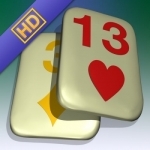
Touch Rummy HD
Games and Entertainment
App
Touch Rummy HD is a tile Rummy game. Touch Rummy is fun, sometimes difficult, but always...
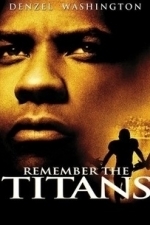
Remember the Titans (2000)
Movie Watch
In Virginia, high school football is a way of life, an institution revered, each game celebrated...
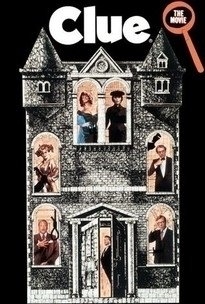
Clue (1985)
Movie Watch
Based on the popular board game, this comedy begins at a dinner party hosted by Mr. Boddy (Lee...

Mahjong Gold Solitaire
Games
App
Mahjong Gold is a free mah jong solitaire game, with one simple yet addictive rule: match and clear...
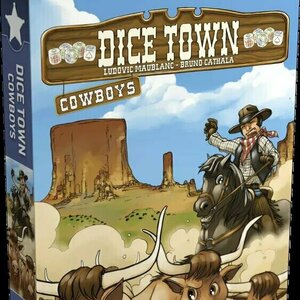
Dice Town: Cowboys
Tabletop Game
With Dice Town: Cowboys, the second expansion for Dice Town, in addition to watching your wealth,...
